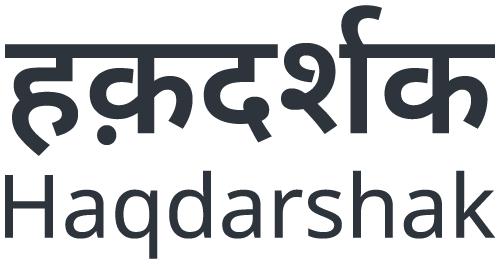Building Resilience: The Power of Increased Insurance Participation

By Prashant Bhide
01 / Introduction
According to the Swiss Re Institute World Insurance Report India is one of the fastest-growing insurance markets in the world.1Insurance penetration (defined as the ratio of total insurance premiums to annual Gross Domestic Product) in India has increased from 2.71 in 2001-02 to 4.2 in 2021-22. Similarly, insurance density, which is the ratio of premiums collected by insurance companies to the country’s population, has increased nearly 8 times, from USD 11.5 to USD 91.2
Despite that, a large population remains uncovered by insurance and is thus vulnerable to the effects of unexpected social, political, and environmental shocks.
Providing affordable and accessible safety nets through social security schemes is instrumental in preventing households from falling back into poverty. Insurance, provided in the form of government schemes, acts as an important intervention.
02 / Current Uptake of Insurance Schemes
The reasons for low insurance penetration have been long explored.
There is a prevailing perception that insurance is not a necessity, and instead, is merely a tax-saving tool.3 However, even if a citizen wanted to get insurance, there is a lack of public knowledge about the type of products available and where to buy them.
Meanwhile, many products available are not tailored to customer needs. One study shows that 43% of respondents who did not enrol in any health insurance programs cited high premiums as the main reason for not doing so.4
There is also a great rural-urban divide in insurance uptake, largely due to the lack of presence of insurers in rural areas. 57% of branches of general insurers and 96% of private sector insurers are in Tier I cities with a population of more than 1 lakh.5
The effects of not availing of insurance are socio-economically debilitating. Analysis from Brookings India shows that over 7% of the population is pushed into poverty every year due to burdening healthcare costs.6
Another study shows that out-of-pocket expenditure on post-accident treatment as a share of Total Consumption Expenditure is significantly higher among those who are either poor, vulnerable or do not have health insurance coverage.7
Moreover, research shows that when a health emergency does occur, people must resort to borrowing from non-institutional sources, which typically amounts to a higher cost than paying a regular insurance premium.8
The impact of having health insurance to protect one from unexpected health crises is significant. When Haqdarshak was working in the Barabanki District, Uttar Pradesh, the team met Dinesh. Dinesh is an unorganised sector worker from the area and has a heart condition. On meeting Dinesh, the team enrolled Dinesh for an Ayushman Bharat Card. Dinesh recently had to be hospitalised due to an unexpected development in his condition — but since Dinesh was covered under the Ayushman Bharat-Pradhan Mantri Jan Aarogya Yojana, he was able to receive a cashless treatment worth INR 2.4 lakh.
Along with life and health insurance, crop insurance is crucial in the Indian context — around 59% of workers are in rural areas and 45.5% of workers across the country are associated with the agriculture sector. The Government estimates that climate change-related shocks could result in a 15-18% loss of income for farmers.9 Insurance, therefore, plays a pivotal role here.
With the increased prevalence of localised calamities, like hailstorms, and with only approximately half of all agricultural areas in the country scaffolded by irrigation, crop insurance has become a necessary measure to reduce the impact of climate change shocks.
03 / Government-Sponsored Schemes
03.1/
Health and Life Insurance Schemes
Government-sponsored insurance schemes are an essential form of social security in India as they provide an alternative to often unaffordable risk-adjusted private insurance schemes.
The National Mission for Financial Inclusion was launched in 2014, with the primary aim of ensuring that every citizen has access to banking facilities, financial literacy, and social security coverage. Under this mission, and the umbrella of Jan Suraksha schemes, Pradhan Mantri Jeevan Jyoti Bima Yojana (PMJJBY), which provides life insurance, and Pradhan Mantri Suraksha Bima Yojana (PMSBY), which provides accident insurance of up to INR 2 lakh, were launched.
With their wide age criteria, these schemes potentially cover almost the entire working-age population in India who have a savings bank account and are ready to pay the annual premium. This near-universal coverage and affordable premium rates (for example, the annual premium to be paid for PMSBY is just INR 20) means they have immense potential to expand insurance coverage.
The gross cumulative enrolment for the PMJJBY increased from 2.94 crore in 2015-16 to 14.43 crore in 2021-22. For the same period, enrolment in PMSBY increased from 9.34 crore to 31.31 crore. Over 70% of enrollment under both schemes came from rural areas and 50% of all applicants were women.
Ayushman Bharat-Pradhan Mantri Jan Aarogya Yojana (PMJAY) is the world’s largest health insurance scheme. It is fully financed by the government and provides a cover of INR 5 lakhs per family, per year, for secondary and tertiary care hospitalisation across registered public and private hospitals in India. Over 12 crore poor and vulnerable entitled families (approximately 55 crore beneficiaries) are eligible for these benefits.
Identifying one’s enrolment in the scheme is straightforward — citizens just need to use their Aadhaar number or Ration Card number to search on the Portal, and once the Aadhar-based eKYC is complete, they can avail of an Ayushman Card.10 To date, Ayushman Cards have been generated for 28.3 crores of citizens. Approximately 6.12 crore application claims, worth INR 77165 crore, have been processed.
Overall, the implementation of PMJAY, along with similar schemes implemented by state governments, has increased households with any member covered under health insurance by 54%, as demonstrated by the changes in the National Family Health Survey 4 (2015-16) to the National Family Health Survey 5 (2019-20). Various studies have also shown that prior awareness about this scheme leads to timely seeking of treatment.11
03.2/
Crop Insurance Schemes
Pradhan Mantri Fasal Bima Yojana (PMFBY) provides insurance coverage and financial support to farmers in the event of the failure of any notified crops as a result of a natural calamity. The scheme covers not only land-owning farmers but extends to tenant farmers and sharecroppers, and covers all non-preventable natural risks from pre-sowing to post-harvest stages of the crops. The premium to be paid by the farmer ranges from 1.5-5% of the total sum insured and the remaining amount is contributed by Central and State Governments.
As of November 2023, 4.35 crore and 6.89 crore farmer applications have been enrolled under the scheme during the Rabi 2022-23 and Kharif 2023 seasons respectively. Claims of INR 3,878 crores have been paid through 7.8 lakh applications for the 2022-23 Rabi season.
This translates to approximately INR 49,000 in compensation paid to each applicant. This compensation helps farmers avoid distress borrowing and provides a source of funds for investment in the upcoming cropping season.12
04 / Enhancing Insurance Uptake
Improving the uptake of insurance will require making insurance products more accessible and affordable.
PMJJBY and PMSBY have been able to garner a high number of enrolments due to their comparatively lower premiums. PMJAY does not have any premium at all, which has undoubtedly contributed to its high enrolment.
There has been a strong information and communication campaign for the generation of Ayushman Cards for eligible citizens. All these factors have resulted in better awareness and greater interest in this scheme.
In the absence of these features, to ensure greater uptake of insurance schemes, there must be proper comprehension of insurance products by the common citizen. This requires educating citizens about the need for insurance and helping them gauge their individual insurance needs. Financial literacy sessions can play an instrumental role in this.
05 / Conclusion
The success of accessible government insurance schemes demonstrates that curated financial products, which are tailored to the needs of diverse audiences, have a higher uptake.
Studies have shown that these insurance schemes have played a pivotal role in reducing out-of-pocket expenditure during catastrophic events like health emergencies, saving on borrowing costs, and preventing the loss of livelihood which might have happened without access to these schemes. The impact of these schemes must be seen from this holistic perspective and not just based on enrolment cost.
Government insurance schemes play a critical role in building public awareness of, and comfort with, diverse financial products.13 Increased enrolment in these schemes plays a pivotal role in building comprehensive financial inclusion across the country, as most of these schemes can be accessed through banks.
Regular interaction with financial institutions introduces citizens to a multitude of accessible products, potentially leading to an uptake of credit schemes, investments, and other savings. The overall multiplier effect of these schemes results in improved standards of living, thus realising the goal of ease of living.
1https://www.indiabudget.gov.in/economicsurvey/doc/eschapter/echap04.pdf
2https://www.indiabudget.gov.in/economicsurvey/doc/eschapter/echap04.pdf
3https://timesofindia.indiatimes.com/blogs/voices/the-changing-perception-around-insurance-in-india/
4https://www.livemint.com/money/personal-finance/what-is-keeping-indians-away-from-health-insurance-high-premium-procrastination-policybazaar-com-life-insurance-11688543844523.html
5https://www.livemint.com/Opinion/mZXybE4ywQZQag12KzY7TO/Four-reasons-why-Indians-buy-such-little-general-insurance.html
6https://www.niti.gov.in/sites/default/files/2023-02/Health-Insurance-for-India%E2%80%99s-Missing-Middle_08-12-2021.pdf
7https://www.nature.com/articles/s41599-022-01369-0
8https://www.econstor.eu/bitstream/10419/242873/1/Working-Paper-394.pdf
9https://www.im4change.org/docs/740economic%20survey%202017-18%20-%20vol.I.pdf
10https://dashboard.pmjay.gov.in/publicdashboard/#/
11https://www.ncbi.nlm.nih.gov/pmc/articles/PMC9098065/
12https://pib.gov.in/PressReleaseIframePage.aspx?PRID=1984068#:~:text=As%20per%20data%20available%20as,and%202021%2D22%2C%20respectively.
13https://www.econstor.eu/bitstream/10419/242873/1/Working-Paper-394.pdf



